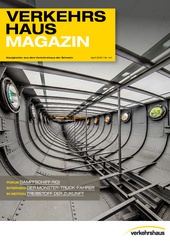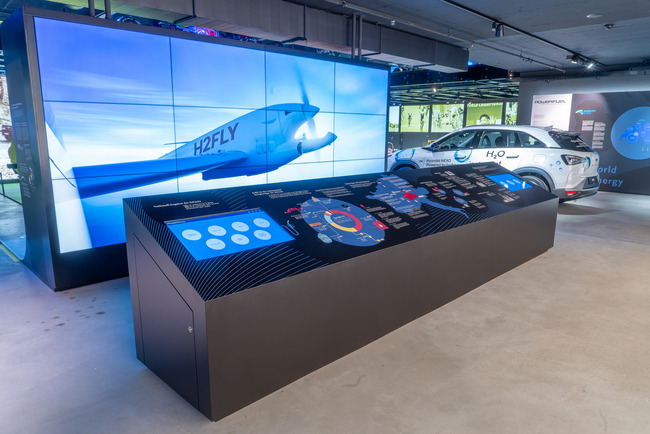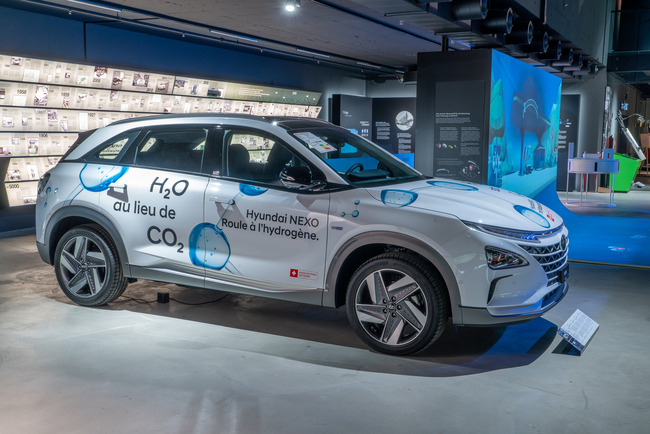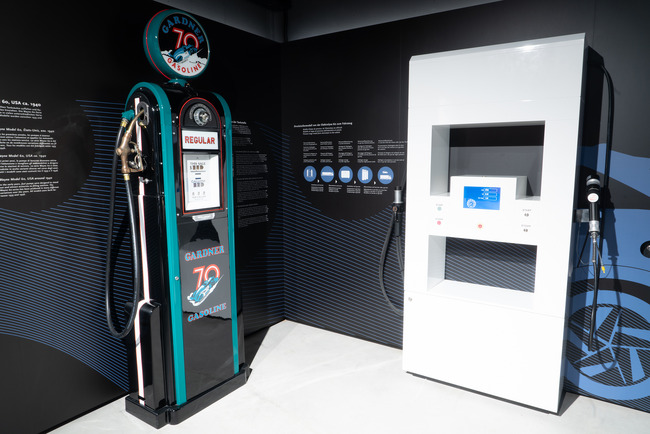Recognising the advantages of fuel cells over batteries for long-distance transport, the English engineer Francis Bacon in the 1960s developed the first fuel cell vehicle: a tractor. Research into hydrogen technology continued until the end of the 1990s, resulting, in the 21st century, in the first series-produced vehicles to appear on the market.
Author Duri Bernet
We Swiss are constantly on the move – whether in everyday life, on business or for leisure. In doing so, we can decide for ourselves how we want to get around: there appear to be no limits. This last great freedom allows people to shape their mobile lifestyle according to their needs. The last 200 years or so have seen ingenious developments such as the train, car and bus arrive on the market, all of which have literally broadened our horizons. And these means of transport are already being powered by hydrogen. This environmentally friendly means of propulsion without harmful tailpipe emissions ensures that mobile freedom can still be experienced in the same way going forward.
Premiere in the exhibition
Now for the first time, the “Powerfuel” permanent mini exhibition sponsored by Avenergy Suisse and Empa in the Road Transport Hall brings to life the topic of hydrogen mobility in Switzerland. The two exhibitors are heavily involved in various aspects of mobility: members of Avenergy – the association of Swiss importers of fuels – ensure the supply of fuels in our country, while Empa – the Swiss Federal Laboratories for Materials Science and Technology under the umbrella of the ETH Swiss Federal Institute of Technology – conducts research into sustainable fuels and future technologies in the realm of bridge and road construction and more.
Filling up with hydrogen
Visitors can take their first steps into the fuel future by simulating the refuelling of a Hyundai NEXO Fuel Cell, a vehicle that is already in series production. The Hyundai NEXO is an all-electric hydrogen fuel cell-powered passenger car.
Fun and games for the children
The display features a 4 x 6-metre “sandbox” in which youngsters can have fun refuelling a vehicle of their choice (lorry, car) with climate-neutral hydrogen by splitting as many water molecules as possible into hydrogen and oxygen using their legs. Once the tank is full, funny animations appear as a reward for all that hard work.
How a fuel cell car works
Hydrogen and oxygen react chemically in the fuel cell to produce electricity. This is stored in a battery and used to drive the electric motor. For this purpose, the voltage of the fuel cell is adapted to the motor via what is known as a direct current voltage converter. Alongside energy and heat, the fuel cell’s only emission product is water.
But where do the hydrogen and oxygen come from?
Hydrogen is produced by a chemical reaction called electrolysis. Using electricity – preferably from renewable energy sources (water, wind, sun) – water is broken down into hydrogen (H2) and oxygen (O2). This hydrogen is compressed, stored and transported to the H2 filling stations, where vehicles are refuelled in a similar process to petrol or diesel. The oxygen for the fuel cell simply comes from the air.
Further information
Further information about hydrogen mobility and security of supply may be found in the exhibition in the Road Transport Hall, which also features a trip back in time. How, for instance, do a petrol pump dating from around 1940 and a modern hydrogen filling station differ?
A story from Verkehrshaus Magazin
 Verkehrshaus MagazinMärz 2021 | Nr. 44
Verkehrshaus MagazinMärz 2021 | Nr. 44





